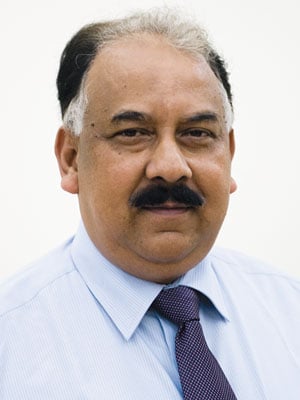
S. Roy Choudhury: We Will Stagnate If We Do Not Expand
Despite a life on the fringes of loss, Hindustan Petroleum has shaken off its dormancy and launched an expansion. S. Roy Choudhury explains the strategy to Forbes India
S. Roy Choudhury
Age: 56
Profile: Chairman and managing director, Hindustan Petroleum (HPCL), holding additional charge as director, marketing.
Career: A mechanical engineer from Assam University, he began his career with the Assam oil company at Digboi. He joined HPCL 29 years ago as a construction engineer.
Interests: Listening to music.
You are on the verge of commissioning a joint venture refinery with the L.N. Mittal group at Bhatinda. How has the experience of working with the world’s biggest steel company been? Do you plan to take the partnership to related areas?
The Mittal group and Hindustan Petroleum Corporation Limited are equal partners at HMEL [Hindustan Mittal Energy] with 49 percent stake each. Our 9-million-tonne refinery will be commissioned by March. We have found Mittal to be a very ethical joint venture partner and we are looking at doing more things together. Both of us have put about Rs. 2,200 crore each in the project. We may expand our collaboration to oil exploration and production in the future. HPCL and Mittal will also divest their stakes to take HMEL to the market, sometime this year.
You had outlined plans to move out of Mumbai and start a brand new refinery on the west coast, to improve margins and the product mix. How fast are these plans taking shape?
We are all set to build a new 9-million-tonne refinery at Lote Parshuram, near Chiplun in Maharashtra. This project is on the fast track and will take three years to complete from the time we get the required clearances. The plan is to transplant the whole project team and licensors that are being de-mobilised from our Bhatinda project. This will save us close to a year, because we will build an almost identical refinery on the west coast. We will also outsource huge chunks, such as the power project, jetty and SBM [single buoy mooring] infrastructure and the hydrogen plant. This will speed up things substantially.
The new project will give us a huge advantage in refining margins. We can then import larger parcels of crude oil and handle much higher complexity than our Mumbai refinery. The plan is to expand to 18 million tonnes over the following few years. Since we have invested significantly in Mumbai, especially in lubes and specialty chemicals, we will definitely continue production from Mumbai.
Profitability is elusive for PSU oil refiners, as crude oil prices continue to rise. How will you fund your expansion plans?
We will stagnate if we stay in the same place and, hence, must expand. Our refineries make just about half the petrol and diesel that HPCL sells in the market today. We are the third largest retailer of fuel with outlets all over the country. We will need to invest steadily in building new refining and retail capacity. We are sure the fuel subsidy problem will be sorted out and we will be able to go ahead with our plans.
The demand for petrol and diesel in India is growing fast. We aim to put up at least 800 more retail outlets every year for the next five years. A significant number of these will be in rural areas, where automobile usage is growing fast. Many of the low-cost outlets in rural areas are quite unlike the glitzy ones you see on the highways and cost only a fraction to put up. HPCL also has huge land assets all over the country, so we plan to leverage these to improve non-fuel revenues.
(This story appears in the 30 November, -0001 issue of Forbes India. To visit our Archives, click here.)





